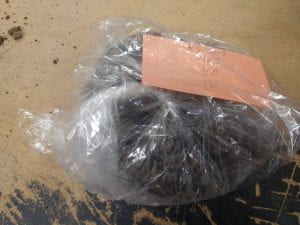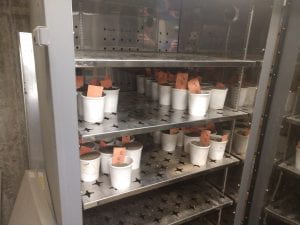This week I got to help out with some soil sampling in corn fields. NMSP is working with farmers to do trials on N-rich strips, which are sections of a field that are given so much pre-plant nitrogen that sidedressing is unlikely to be necessary. These plots help farmers to estimate how much nitrogen they need in certain areas and guess whether or not larger applications of nitrogen would make sense economically across certain management zones.
Field technicians use soil probes to take core samples from two soil depths, 8″ and 12″. The 8″ samples are used for general soil fertility tests, while the 12″ samples are tested in-house for soil nitrate levels. Although the 12″ cores can be very difficult to take in rocky soils, it’s important for researchers to know how much nitrate is present throughout the entire rooting zone.


